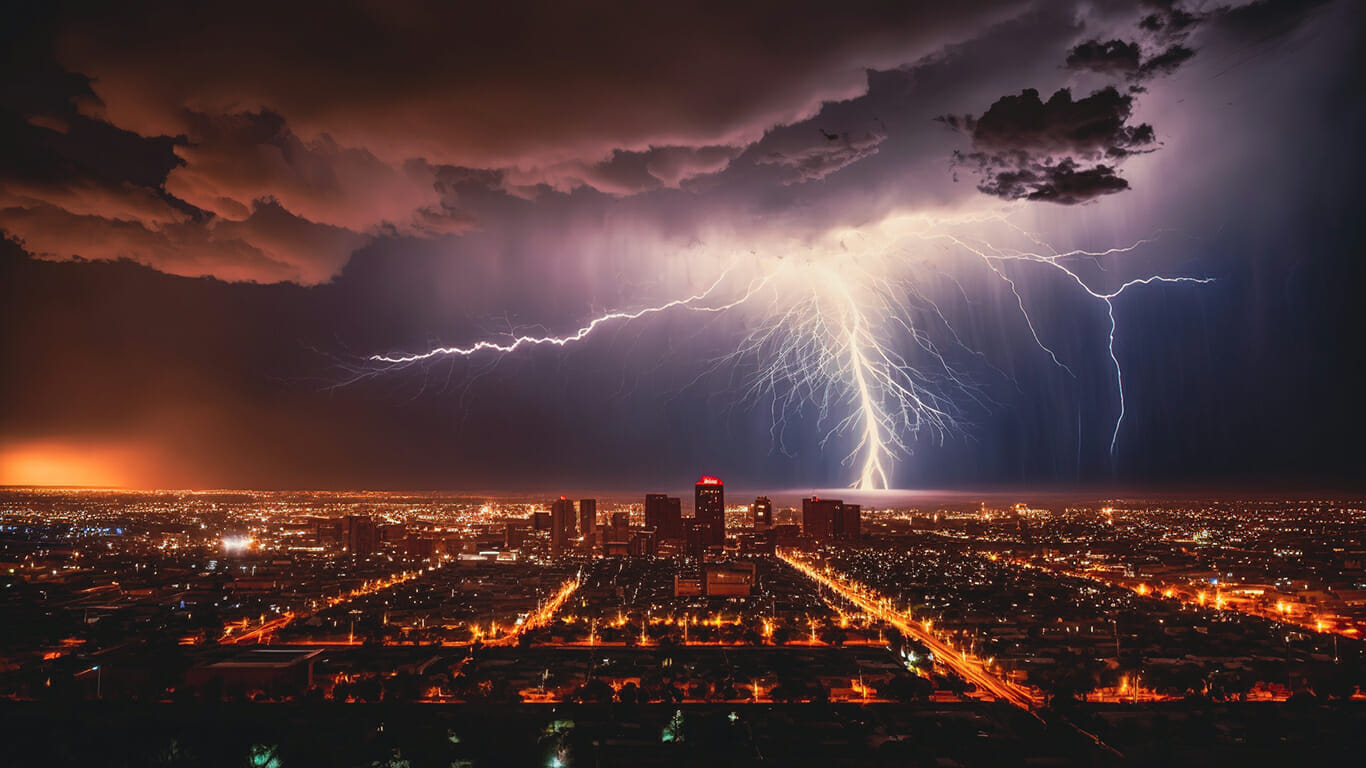Monsoon seasons are unpredictable in Arizona. In 2020, the state saw one of the driest monsoons of all time, while 2021 was the second wettest in the past 30 years. Most Arizonans remember the extraordinary storms that occurred during the 2014 monsoon season with multiple 100-year storm events recorded by the Maricopa County Flood Control District. What most Arizonans don’t know is that monsoon season can also cause legal issues that they may be unprepared to handle.
LEARN MORE: How to prepare your roof for summer monsoon season
A 100-year storm is a storm event that has an intensity that is likely to recur once every hundred years. The 2014 monsoon season wreaked havoc throughout Phoenix, ravaging residential communities and causing extensive flooding damage. During that year, a record-breaking rainstorm descended upon Phoenix in September, producing an all-time rainfall record of 3.30 inches for the day at Sky Harbor Airport and more than six inches at some locations around the Valley.
During typical monsoon rainstorms, residents may observe a modest build-up of storm water and sediment. In larger rainstorms, storm water can flow through washes and channel bottoms throughout neighborhoods and across homes, transporting water, sediment and debris from one house to another. In extreme cases, significant flooding occurs, as Arizonans lived through in 2014.
How monsoon legal issues arise
Homeowners concerned about protecting their home from flooding may erect walls around the perimeter of their property; import dirt fill to engage in a landscape remodel and raise the elevation of their lot; or build other structures designed to obstruct or divert water flow from their property.

While these “protective” actions appear to reflect that of a responsible and prudent homeowner, changing drainage conditions in Arizona is unlawful and can lead to significant liability. Under state law, a legal mechanism exists to seek injunctive relief and force the offending homeowner to restore the historical drainage conditions.
Further, in the eyes of the law in Arizona, not all water is treated alike. The law differentiates surface water, stream water, and floodwater. Surface water is water naturally spreading over land – i.e., rainfall. Stream water is water that flows in a watercourse, like a wash or stream. Flood water is water that escapes from a watercourse and flows over adjoining lands wildly and in no regular channel.
Under Arizona law, landowners cannot obstruct or divert the flow of surface waters without providing sufficient outlets. Further, while landowners are prohibited from obstructing or diverting the flow of stream water, landowners can obstruct and protect themselves against exclusively floodwater.
With the 2023 monsoon season set to begin June 15 on the heels of a historically wet winter, Valley residents are waiting to see if it will be a wet or dry summer.
Therefore, if you are involved in a dispute involving the changing of drainage conditions, it is imperative to understand the relevant surrounding area and topographic features to know whether the water being diverted is surface water, stream water, or flood water. If a homeowner has questions or concerns, it is advisable to seek counsel before making any changes that might alter the drainage conditions on the property.
Further, before making any changes to one’s property that could affect drainage conditions, a homeowner should also consult with a civil engineer and discuss submitting grading and drainage plans to the local municipality to seek approval of the planned developments. Sometimes a homeowner will obtain a building permit from the local municipality for the planned development (i.e., construction of a perimeter wall), but the building permit does not account for a change in drainage conditions and the building permit by itself may not immunize the homeowner from liability if drainage conditions are changed unlawfully and another homeowner nearby is adversely impacted by the change.
Neighbors generally wait until a large storm has occurred (during monsoon season) before bringing legal action against the homeowner that changed the drainage conditions in the neighborhood. By that point, the aggrieved neighbor’s property likely has incurred significant damage from the water diversion. In extreme cases, the home may also experience water intrusion from the diversion of water flow. If you are aware of a neighbor who has altered drainage conditions based on development of their property, you should seek legal counsel to provide a legal assessment of your situation.
Additionally, if you are aware of a neighbor who is in the process of developing their property in a manner that could adversely affect the nearby drainage conditions, you should likewise obtain an assessment from legal counsel. In line with the above, it is also important to make sure you are not inadvertently violating Arizona law through any developments on your property.
Finally, it is important to keep disclosure issues in mind. If your neighbor has engaged in a recent development that changed the drainage conditions such that in the next large rainstorm your property will experience an unusual and unnatural amount of water intrusion, you may have an obligation to disclose this fact to a prospective purchaser to your property.
Otherwise, you may be in for a flood of legal issues.
Author: Benjamin Gottlieb is the founder of Gottlieb Law, PLC. He graduated with high honors from the business program at Michigan State University, and then attended the Sandra Day O’Connor School of Law at Arizona State University, where he served as the Managing Editor for the Arizona State Law Journal.




